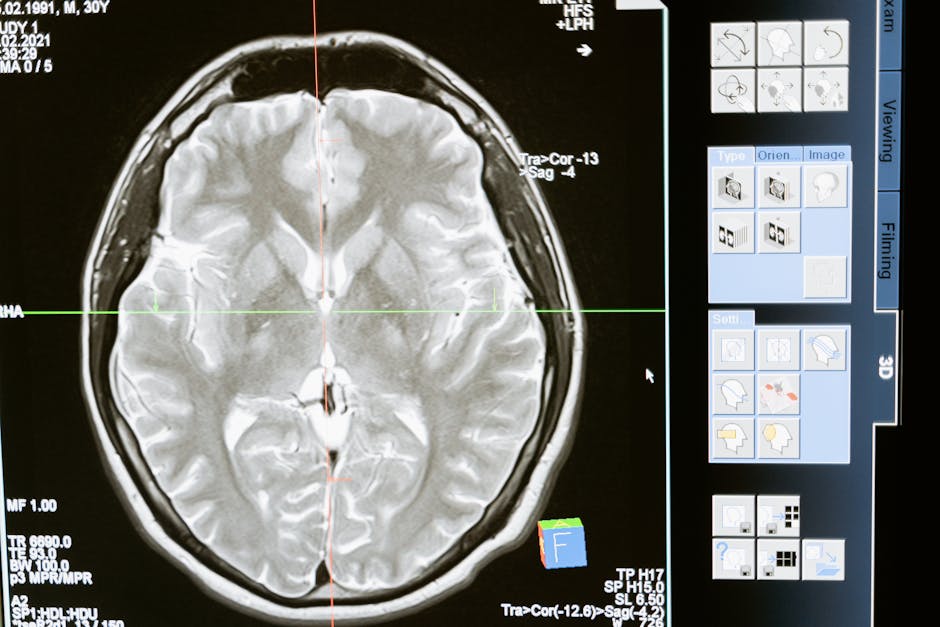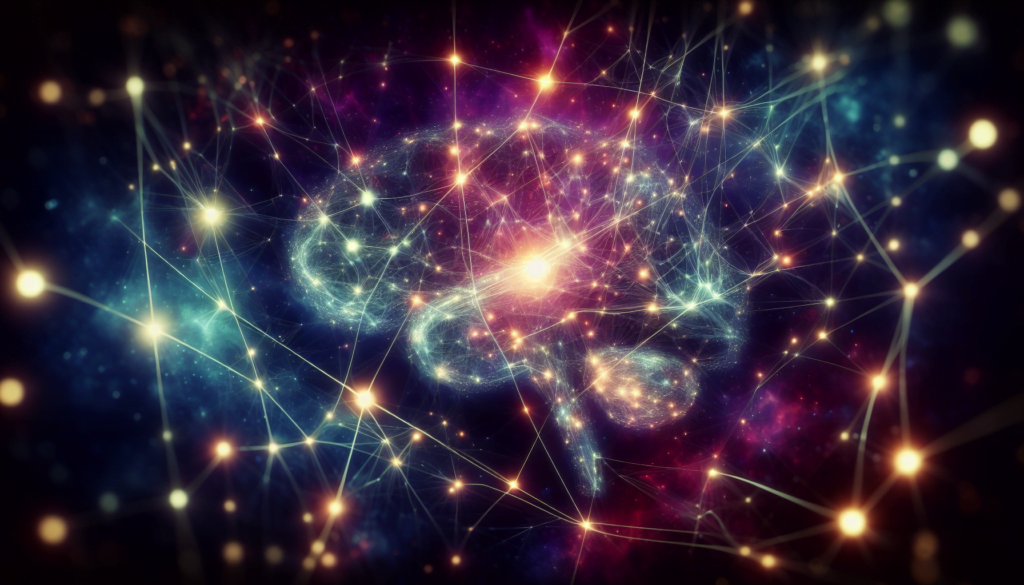The human brain, a marvel of biological engineering, possesses a remarkable ability known as neuroplasticity. This feature allows the brain to adapt, rewire, and forge new pathways throughout an individual’s life. Understanding neuroplasticity is not just for scientists or medical professionals; it’s a subject that can inspire and offer hope to anyone interested in the resilience and potential of the human mind.
Key Takeaways
- Neuroplasticity is the brain’s ability to reorganize itself by forming new neural connections.
- It plays a crucial role in recovery from brain injuries and can be influenced by various factors, including lifestyle and environment.
- Neuroplasticity is not just limited to the young; it continues throughout the lifespan.
- Therapeutic applications of neuroplasticity offer promising avenues for treating a range of conditions.
- Ongoing research into neuroplasticity is expanding our understanding of the brain and its capabilities.
Introduction to Neuroplasticity
Definition of Neuroplasticity
Neuroplasticity, or brain plasticity, refers to the brain’s capacity to change and adapt as a result of experience. This plasticity underpins learning, memory, and recovery from brain damage.
Types of Neuroplasticity
Structural Neuroplasticity
Structural neuroplasticity involves the brain’s ability to actually change its physical structure through learning and experience.
Functional Neuroplasticity
Functional neuroplasticity refers to the brain’s ability to move functions from a damaged area to undamaged areas.

Neuroplasticity and Brain Damage Recovery
Treatment Approaches
Retraining the Brain
After injury, the brain can be retrained to regain lost functions, a process that relies heavily on the principles of neuroplasticity.
Forming New Neural Connections
The brain can form new connections to compensate for injury, essentially rerouting functions through healthy brain tissue.
Implications for Medical Practices
The concept of neuroplasticity has revolutionized medical approaches to brain damage, leading to more effective rehabilitation strategies.
Rehabilitation Therapies
Stroke Recovery
Stroke patients often benefit from therapies that leverage neuroplasticity to recover lost abilities.
Traumatic Brain Injuries
For those with traumatic brain injuries, neuroplasticity-based therapies can be life-changing.
Degenerative Neurological Diseases
Even with degenerative diseases, neuroplasticity offers a glimmer of hope for slowing the progression of symptoms.

Neuroplasticity in Various Health Conditions
Chronic Pain Management
Neuroplasticity can contribute to both the development and alleviation of chronic pain, offering new avenues for treatment.
Depression Treatment
Rewiring Brain Pathways
In depression, neuroplasticity can be harnessed to rewire brain pathways, potentially improving symptoms.
Mood Regulation
Understanding and influencing the neuroplastic changes that affect mood regulation can lead to better treatments for depression.
Attention Deficit Hyperactivity Disorder (ADHD)
Developing Interventions
Neuroplasticity informs the development of interventions for ADHD, aiming to enhance focus and attention.
Management of the Condition
By understanding the neuroplastic changes associated with ADHD, better management strategies can be devised.

Neuroplasticity Across the Lifespan
Aging and Cognitive Function
Maintaining Cognitive Function
Neuroplasticity plays a role in maintaining cognitive function as we age, suggesting that our brains can continue to adapt and learn.
Mitigating Age-Related Decline
Strategies that promote neuroplasticity may help mitigate age-related cognitive decline.
Early Child Development
Educational Strategies
In early childhood, educational strategies that promote neuroplasticity can enhance learning and development.
Enhancing Learning and Development
Understanding neuroplasticity can lead to more effective teaching methods that cater to the developing brain.

Neuroplasticity in Sensory Adaptation and Loss
Phantom Limb Phenomenon
Neuroplasticity is at the heart of the phantom limb phenomenon, where the brain adapts to the loss of a limb.
Cochlear Implants and Deafness
For those with cochlear implants, neuroplasticity allows the brain to adapt to new ways of processing sound.
Human Echolocation in Blindness
Blind individuals can use echolocation to navigate their environment, a skill that showcases the brain’s plasticity.

Lifestyle and Environmental Influences on Neuroplasticity
Multilingualism and Cognitive Function
Learning multiple languages can enhance cognitive function and is an example of neuroplasticity in action.
Physical Activity and Brain Health
Fitness and Exercise
Regular fitness and exercise can promote neuroplasticity, leading to improved brain health.
Impact on Cognitive Function
Physical activity has a positive impact on cognitive function, likely due to its effects on neuroplasticity.
Environmental Factors and Seasonal Brain Changes in Animals
Animals experience seasonal brain changes that are influenced by environmental factors, demonstrating neuroplasticity in the animal kingdom.
Therapeutic Applications of Neuroplasticity
Artistic Engagement and Art Therapy
Artistic engagement and art therapy can stimulate neuroplasticity, offering therapeutic benefits.
Meditation Practices
Brain Structure Changes
Meditation can lead to changes in brain structure, indicative of neuroplasticity at work.
Mental Health and Cognitive Abilities
Meditation practices can improve mental health and cognitive abilities through neuroplastic changes.

Neuroplasticity Research and Advanced Understanding
Homologous Area Adaptation
Research into homologous area adaptation provides insight into how the brain compensates for damage by using parallel areas.
Compensatory Masquerade in Cortical Neuroplasticity
Compensatory masquerade is a phenomenon where the brain compensates for loss by enhancing other functions.
Traumatic Brain Injury Rehabilitation Strategies
Innovative rehabilitation strategies for traumatic brain injury are being developed based on our growing understanding of neuroplasticity.
Neuroplasticity is not just a scientific concept; it’s a testament to the adaptability and resilience of the human brain. It offers hope for recovery, suggests strategies for maintaining brain health, and continues to inspire new therapeutic approaches. As research progresses, our appreciation for the brain’s malleability deepens, revealing an organ that is as dynamic as it is complex.
Unlocking the Brain’s Potential: The Neuroplasticity FAQ Guide
What is neuroplasticity?
Neuroplasticity, also known as brain plasticity, is the ability of the brain to change and adapt throughout an individual’s life. This includes the brain’s capacity to reorganize itself by forming new neural connections in response to learning, experience, or following injury. This remarkable adaptability allows for the learning of new skills, recovery from brain injuries, and adaptation to new environments or changes in sensory inputs.
How does neuroplasticity work?
Neuroplasticity works through several mechanisms, including the strengthening or weakening of existing synapses (synaptic plasticity), the growth of new neurons (neurogenesis), and the formation of new neural pathways. When we learn something new or repeat a task, the brain adjusts the efficiency of synapses and can increase the number of connections between neurons, enhancing our ability to perform the task or recall the information.
Can neuroplasticity occur at any age?
Yes, neuroplasticity occurs throughout the lifespan, from infancy to old age. However, the rate and ease of neural reorganization may vary with age. Children’s brains are generally more plastic and capable of forming new connections more easily, which is why they learn quickly. As we age, plasticity doesn’t stop but may require more effort and time to reshape neural pathways.
What factors influence neuroplasticity?
Several factors influence neuroplasticity, including genetics, environment, cognitive activity, physical exercise, and emotional well-being. Engaging in new learning experiences, staying physically active, having a rich social life, and managing stress positively can all enhance the brain’s plasticity. Conversely, factors like chronic stress, lack of stimulation, or substance abuse can negatively impact plasticity.
Can neuroplasticity help in recovering from brain injuries?
Yes, neuroplasticity plays a crucial role in recovery from brain injuries. The brain can rewire itself to compensate for lost functions or to maximize remaining functions. Rehabilitation therapies that involve repetitive, task-specific exercises can promote this rewiring and help individuals regain skills and improve their quality of life after brain injury.
Is it possible to enhance neuroplasticity?
Yes, it is possible to enhance neuroplasticity. Activities that challenge the brain, such as learning a new language, playing a musical instrument, or engaging in complex problem-solving, can stimulate neural growth and connectivity. Regular physical exercise, adequate sleep, a healthy diet, and mindfulness practices are also known to support and enhance neuroplasticity.
How does stress affect neuroplasticity?
Stress can have both positive and negative effects on neuroplasticity. Short-term, manageable stress can stimulate the brain and enhance learning and memory. However, chronic or excessive stress can impair brain plasticity by affecting the production of new neurons and weakening synaptic connections. It’s important to find healthy ways to manage stress to maintain optimal brain health and plasticity.
Can neuroplasticity be harmful?
While neuroplasticity is generally beneficial, it can sometimes lead to negative outcomes. For example, maladaptive plasticity can occur when the brain develops undesirable connections, as seen in chronic pain syndromes or certain types of learning disabilities. Additionally, addictive behaviors can be reinforced through neuroplastic changes, making them more ingrained and difficult to overcome.
What is the role of neuroplasticity in learning and memory?
Neuroplasticity is fundamental to learning and memory. When we learn new information or skills, our brain’s neural networks adjust to store and manage this data. This involves creating and reinforcing pathways that connect various regions of the brain, leading to more efficient retrieval and application of knowledge. Memory consolidation and long-term retention are also products of neuroplastic changes.
Does sleep affect neuroplasticity?
Sleep plays a vital role in neuroplasticity. It is during sleep that the brain processes and consolidates learning and memory from the day. Sleep facilitates the removal of waste products from neural processes, supports the formation of new synaptic connections, and helps in the reorganization of existing networks. Adequate sleep is essential for maintaining the brain’s ability to adapt and learn.



